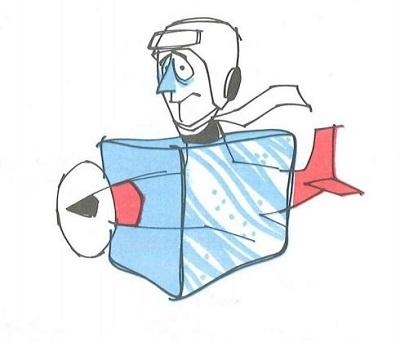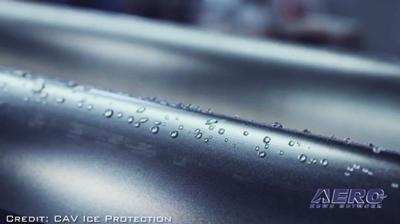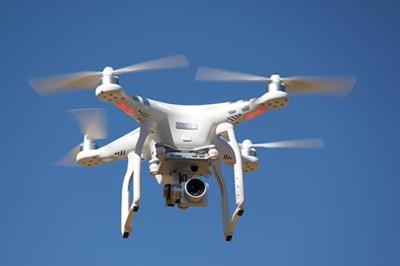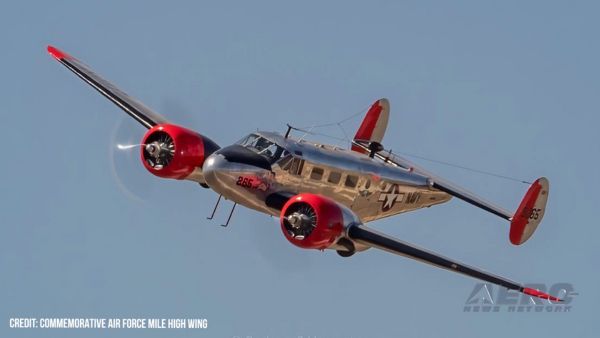Novel Architecture to Broaden UAV Operations
CAV Ice Protection Limited—a leading global supplier of airborne ice protection solutions, announced on 17 March 2023 that it had filed documents germane to the patenting of an anti-icing solution for small Uncrewed Aerial Systems (sUAS). CAV set forth that the new system has the potential to revolutionize the manner in which commercial drones are utilized in cold climates.

Engineers at the U.K.-based manufacturer, which is a subsidiary of the CAV Systems Group, designed a concept Ice Protection System (IPS) that successfully prevented ice from accreting on the rotor blades of an sUAS. The company plans to bring the architecture to market in short order.
The rise in the popularity of drones and unmanned aircraft has occasioned demand for the development of technologies capable of mitigating the effects of inclement weather on Unmanned Aerial Systems (UAS), to include sUAS platforms—particularly as the emphasis of the UAS market broadens beyond the hobbyist and defense sectors to include customers engaged in medical, retail, and logistics operations.
CAV Systems vice-president of engineering Alex Baty stated: “This is an industry first, nobody has previously demonstrated an ice protection system that works for this size of aircraft, and we’re not aware that anybody else is working on one. We’re ahead of the curve in that respect and it has attracted the attention of some major distributors. We know that, globally, the use of drones for last-mile delivery is already in action. We hope that our anti-icing system can help to tackle a significant obstacle to widespread drone usage.

Mr. Baty continued: “Our testing has seen the effects of icing on a propeller will cause a 50% reduction in lift generation after just three minutes, which underlines the impact that icing can have on sUASs. If sUAS-based product delivery is to move forward, and become viable across a range of geographical locations, then ice-protection will need to be factored in, in order to guarantee safe, efficient, and reliable flying. There are some potential niche applications as well; the idea has been explored of using sUASs to launch flares that would seed clouds with silver oxide particles for weather modification. Imagine being able to use unmanned aircraft to remove freezing fog conditions around an airport.”
CAV Systems’ ice protection solution works by distributing freezing-point depressant fluid across the leading edges of a carbon-fiber blade characteristic of the type commonly used to propel small unmanned aircraft.
Testing of the system began with a single motor and 18-inch-diameter rotor assembly and progressed to an octocopter. Further tests utilizing rotors with and without the CAV IPS in an icing wind tunnel yielded positive results.
During subject tests, the application of the CAV IPS to the rotor blades resulted in minimal lift-reduction—as little as ten-percent—with correspondingly small changes to power. Icing, conversely—as Mr. Baty stated—reduces rotor-blade lift by up to fifty-percent and often requires power-increases of as much as one-hundred-percent to maintain flight—thereby dramatically reducing battery life and aircraft endurance and range.

Weight, too, is a critical factor in the design of aircraft ice protection systems; engineers at CAV have kept the weight of the full Octocopter IPS, including fluid storage, under two-kilograms (4.4-pounds)—about twenty-percent of the test aircraft’s total payload. CAV engineers believe the system’s weight can be further reduced by as much as 25-percent.
Mr. Baty concluded: “The work we have done, and are continuing to do, around weight reduction will have a huge bearing on the solution. When a drone has a payload of around ten-kilograms, five-hundred-grams is a significant percentage.”
Flight-testing of CAV’s ice protection system in actual atmospheric icing conditions is scheduled to be carried out in Colorado prior to the end of March 2023. The test regimen will be carried out under the auspices of a major regulatory body
Parties interested in learning more about CAV Systems and its technologies are invited to visit the company’s website.
 ANN FAQ: Follow Us On Instagram!
ANN FAQ: Follow Us On Instagram! Classic Aero-TV: Innovation By Avilution Pilots Care About Results
Classic Aero-TV: Innovation By Avilution Pilots Care About Results Aero-News: Quote of the Day (05.09.25)
Aero-News: Quote of the Day (05.09.25) ANN's Daily Aero-Term (05.09.25): Estimated (EST)
ANN's Daily Aero-Term (05.09.25): Estimated (EST) ANN's Daily Aero-Linx (05.09.25)
ANN's Daily Aero-Linx (05.09.25)





